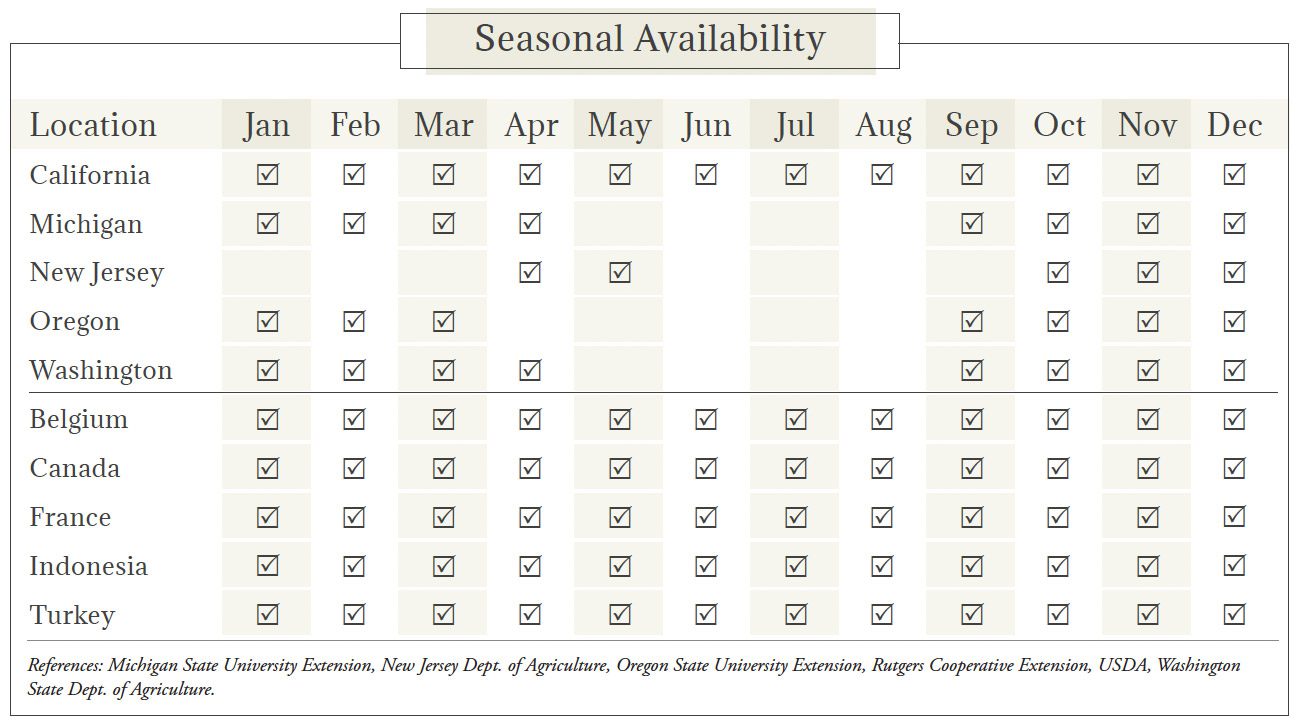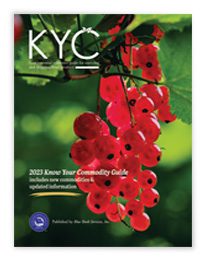Leeks Market Summary


Image: Marta navarroP/Shutterstock.com
Leeks Market Overview
A member of the onion family, leeks (Allium porrum) are native to Asia and the Middle East, where they have been eaten since ancient times and are even mentioned in the Bible. Leeks are very popular in Europe, where they are revered in Wales as a national symbol of religious freedom. The word ‘leek’ purportedly means only ‘plant,’ lending itself to several names like sibling garlic, once pronounced ‘gar-leek.’ Elephant garlic is actually a type of bulbing leek with cloves, and not garlic at all. Leeks look like oversized, very thick green onions with bluish-green broad leaves and a thick white compacted sheaf (often incorrectly called a stem or stalk) that can grow up to 10 inches long. Considered “the gourmet’s onion,” leeks have a subtle ?avor and are milder and sweeter than other onions and garlic. The white lower part of the plant, the actual leek, can be consumed raw or cooked, but the green leaves should be discarded. Leeks are steamed, boiled, braised, or fried and eaten whole. They are also frequently chopped or crushed and added to soups, sauces, casseroles, and other dishes. The unique green vegetable is an essential ingredient in vichyssoise, a classic thick soup made from pureed leeks, potatoes, chicken stock, and cream, traditionally served cold. Depending on the planting season and region, leeks come in a wide range of varieties. Some of the more popular options include American Flag, Arkansas, Bandit, Carina, Columbus, Derrick, Electra, Gigante d’Inverno, Jersey, Jolant, King Richard, Lancelot, Lexton, Lincoln, Megaton, Musselburgh, Pandora, Rally, Tadorna, Titan, Tivi, and Varna.
The Cultivation of Leeks
Leeks are a labor intensive crop because they are typically transplanted, harvested, cleaned, and packed by hand. A cool-weather crop, leeks thrive in temperatures below 75°F in full sun and well-drained slightly acidic soil. If temperatures fall precipitously, plants may bolt. It can take 70 to 150 days for leeks to grow to full maturity, depending on variety. Although it varies by region, leeks are generally planted in late summer or early fall for winter harvesting. Transplanted leeks should be grown in a greenhouse or indoors for 6 to 8 weeks before outdoor planting. To encourage growth of a longer edible sheaf, leeks should be planted deeper (up to 12 inches) into the soil. Plants require regular watering, but overwatering should be avoided to prevent fungal development. Leeks are ready for harvest when the sheaf is 1 to 2 inches in diameter. Although some growers start the harvesting process with machines, most leeks are pulled by hand due to their root systems.


